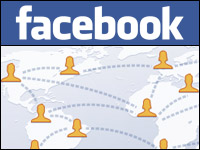
The recent news that AT&T made a deal to acquire BellSouth has elicited two reactions: one, an assumption that communications prices will go up; and the other, an assumption that prices will go down. It’s always tough to predict exactly what will happen in the marketplace, but the best money will be on the bet that the merger is good for consumers.
The communications market isn’t what it used to be, and that’s a good thing. Consumers used to get their phone services from the phone company and their cable services from the cable company. With the advent of the digital age and the creation of technologies that allow for multiple types of data to be transmitted using Internet protocols, the market for phone and cable services is open to anyone who can best serve consumers.
Scale Matters
For instance, voice over Internet protocol companies (VoIP) such as Vonage and Skype offer consumers low-cost phone service, making old landlines virtually obsolete. Likewise, new technologies like Internet protocol TV (IPTV) allow for lower-cost video services via the Net.
The nation’s telephone and cable companies are well aware of these facts, which is why they have been steadily moving into the broadband market. However, building big data networks is not cheap, which is why there’s been so much consolidation in the last couple of years. Even Reed Hundt, former FCC chairman and a Democrat, agrees.
“In this business, scale really matters. It’s like NFL linemen. You want ’em big, you want ’em fast, but most important, you want ’em big,” Hundt said recently. This apparent reversal of opinion by Hundt was noted by Adam Thierer, analyst for the Progress and Freedom Foundation. Writing for the Technology Liberation blog, Thierer noted that just ten years ago, Hundt considered an AT&T/BellSouth merger unthinkable, yet today he is practically promoting it.
“I have to give Hundt credit for recognizing the changed competitive landscape since 1997,” Thierer said. “Long-distance has largely been cannibalized by the rise of rigorous wireless competition and flat-rate nationwide calling plans. The Internet is everywhere, which means IP-enabled calling is a new threat to the old players. And the old Bell copper empire has now become a copper cage they are fighting their way out of.”
Experts Can Be Wrong
Indeed — and it is here that policy makers should note a key lesson — government experts, like the former FCC chairman, often get things wrong. This makes it incredibly important to leave the market as unfettered by government regulations as possible so as not to create distortions that unintentionally harm consumers.
Hundt, who presided over the implementation of the Telecommunications Act of 1996, might also look back at those regulations to see how government control of the pipes through price controls and forced contracts stymied innovation and harmed consumers. That’s a mistake that should be avoided this time around, especially considering the recent Congressional debates over net neutrality — the idea that no Web sites should be blocked by Internet service providers.
That’s a principle that everyone seems to agree with, but the debate gets tricky when content companies like Google insist that they also shouldn’t have to pay more when their services use more bandwidth than other businesses. In making this argument, Google has been looking to government for intervention, but that would be the wrong way to go.
Learning From the Past
It is clear that predictions for communications prices are closely linked with government decisions. If Congress ever decides to put limits on what broadband providers can charge their customers, investment will flee the sector like a vampire from garlic. Given how expensive it is to build the networks, that wouldn’t be a good outcome for the companies or consumers, so one hopes that lessons from the past aren’t ignored.
The AT&T/BellSouth deal is a natural development in a competitive marketplace that requires large investments to produce effective networks. The highly competitive atmosphere that is driving the merger will also benefit consumers through better prices and quality of service, so long as government works to remove old regulatory barriers and avoids new ones.
Sonia Arrison, a TechNewsWorld columnist, is director of Technology Studies at the California-based Pacific Research Institute.





















































